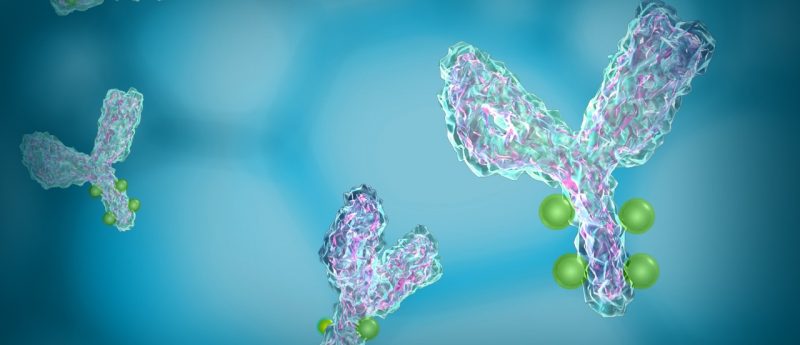Biomarkers and immunogenicity: an interview with Weiping Shao

Weiping Shao
Director of Bioanalytical Operations at Regeneron Pharmaceuticals (NY,USA)
Could you please introduce yourself? How did you get into the field of immunogenicity?
I am Director of Bioanalytical Operations at Regeneron Pharmaceuticals (NY, USA). Prior to joining Regeneron, I was a Research Fellow at Merck & Co (PA, USA), serving as a Compound Manager responsible for overall preclinical safety assessment strategy in drug development, as well as a Team Leader for the Inflammatory Biomarker Initiative, special chemistry testing and toxicity mechanistic investigation. Before Merck, I was Group Leader of Proteomics R&D at Molecular Staging (CT, USA), where I was the Primary Designer and Developer of protein microarray products for biomarker research and discovery services. I earned my PhD in Biologic Chemistry from Nanjing University in China. This was followed by a post-doctoral fellowship at the University of California, San Diego (CA, USA). Also, I have authored or co-authored over 33 fully peer-reviewed research papers. My involvement in the field of immunogenicity started from my research in predicting and assessing the safety of vaccine candidates for their appropriate immune response in humans.
As Director at Regeneron Pharmaceuticals, what does your current role entail? Describe the technologies that you use for testing immunogenicity?
As Director of Bioanalytical Operations, I oversee the bioanalytical activities for pharmacokinetics (PK), biomarker and immunogenicity analysis, and manage the bioanalytical deliverables to support all clinical studies from First-In-Human (FIH) to market approval and post marketing surveillance. I also serve as Program Strategic Lead responsible for the immunogenicity assessment strategy for clinical development. The technologies we use for testing immunogenicity are the enzyme-linked immunosorbent assay and electrochemiluminescence immunoassay, which are among the most popular methods because of their robustness, high sensitivity and high-throughput.
What are the challenges you face in identifying the immunogenicity of a compound? How do you think immunogenicity testing can be regulated and standardized?
Immunogenicity testing is increasingly recognized as an important component of clinical development for biotherapeutics. The potential impact of immunogenicity on the efficacy and safety profile of a drug requires careful development of the testing method and meaningful reporting of immunogenicity in a clinically relevant context. Due to the potential interferences in immunoassay and a lack of uniform standards for testing methods, study design and ADA interpretation, immunogenicity assessment becomes quite challenging. How we assess immunogenicity continues to evolve as novel technologies and new clinical immunogenicity data emerge. Here are just some examples:
- Detection of ADAs in the immunogenicity assays may be interfered by the presence of a drug within test samples. Drug bound ADA can go undetected by ADA assays, resulting in a false negative result or underestimation of titre. To minimize drug interference, an appropriate approach to dissociate ADA-drug complexes prior to ADA detection such as acid dissociation and use of wash-out samples can be incorporated to enable ADA detection. Through this approach, most drug-tolerant ADA assays can measure ADA in samples containing drugs in excess of concentrations commonly expected in test samples. Regulatory guidance documents from both FDA and EMA have recommended that ADA assays are developed to examine drug interference, which can be increased by acid dissociation pretreatment of the sample.
- Another interference that can confound the detection of ADAs is the soluble target of the drug. Because of the incorporation of acidification in the ADA assay, the drug-target complexes can release high levels of target, which can potentially lead to false positive or negative ADA results (depending on whether the target is monomeric or multimeric). Several approaches have been developed to mitigate this issue. These include addition of blocking proteins such as binding receptors or non-competing antibodies for the target, depletion of the target by affinity capture or adjustment of assay pH to mild base or acid conditions. The use of a combination of these approaches may be needed when the target interference is significant and cannot be effectively eliminated with one method. For mild basic or acid assay conditions, rigorous evaluation of the assay performance is needed to ensure the assay pH conditions do not impact the assay’s ability to detect an ADA response.
- One of the major challenges in immunogenicity assessment is assessing and reporting the clinical relevance of immunogenicity. Although ADAs have been associated with efficacy and safety risk, the presence of ADAs does not necessarily translate into clinical relevance, especially for low risk drug candidates such as most monoclonal antibodies. With the advancement of technologies and platforms in immunogenicity assays, a supersensitive ADA assay with single digit ng /mL sensitivity based on a positive control and high drug tolerance levels has been easily achieved, which can result in high ADA incidence rate. ADA incidence rate also depends on how the assay cut points are established from outlier removal to patient populations. Therefore, the incidence of ADA, especially low titer ADA, is often not associated with clinical relevance. In our experience, higher titer, persistent ADA responses, defined as at least two consecutive positive responses over 5 half-lives, provides a more clinically relevant evaluation of immunogenicity. It also provides a clear distinction from low titer, transient ADA responses that typically have no impact on PK, efficacy and safety.
ADA assays are developed by different laboratories using, often proprietary, reagents and positive controls. Due to the lack of standardized reference standards and the nature of a non-quantitative assay, it is impossible to calibrate the immunogenicity assays even for the same drug. However, FDA and EMA have provided specific guidance on immunogenicity testing and assay development. It is expected that the assay should be properly developed or validated for adequate sensitivity, drug tolerance, specificity, selectivity, precision, dilution, and reproducibility to ensure consistent ADA results.
What is your favourite aspect of your work and how does Regeneron encourage collaboration?
Immunogenicity testing is complex and challenging. It involves a multidisciplinary approach including assay development, biological mechanism of action, clinical study design, patient population and product related factors. Designing the immunogenicity testing strategy and providing clinically meaningful evaluation for each unique biotherapeutic throughout drug development, by working with a cross-functional team, is certainly a favourite aspect of my work. There is still much debate on translating guidance and whitepaper on clinical immunogenicity testing and reporting into an assessment strategy for individual molecules. Communication and information sharing has become really important to advance this field, which Regeneron has been actively engaged in through presenting our work, attending scientific conferences and AAPS working groups.
What further investigations do you have planned? What advances do you envisage with respect to immunogenicity in the coming years?
Although regulatory agencies, such as FDA and EMA, recommend a risk-based approach to assess the immunogenicity for a biotherapeutic, the clarity or guidance on translating the risk class of a drug candidate into a clinically relevant testing strategy, based on current guidance on immunogenicity testing, is still lacking. Adopting similar assessment requirements for individual molecules or requesting additional testing with no value added is difficult to justify. I think generating and reporting meaningful immunogenicity data with clinical relevance will remain at the top of the list to discuss in the industry, as well as with regulatory authorities over the coming years.






